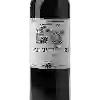
Winery Jacques CharletLa Victorine Saint-Amour
In the mouth this red wine is a with a nice freshness.
This wine generally goes well with pork, poultry or veal.
Taste structure of the La Victorine Saint-Amour from the Winery Jacques Charlet
Light | Bold | |
Smooth | Tannic | |
Dry | Sweet | |
Soft | Acidic |
In the mouth the La Victorine Saint-Amour of Winery Jacques Charlet in the region of Beaujolais is a with a nice freshness.
Wine flavors and olphactive analysis
On the nose the La Victorine Saint-Amour of Winery Jacques Charlet in the region of Beaujolais often reveals types of flavors of cherry, plum or cranberry and sometimes also flavors of red fruit, black fruit.
Food and wine pairings with La Victorine Saint-Amour
Pairings that work perfectly with La Victorine Saint-Amour
Original food and wine pairings with La Victorine Saint-Amour
The La Victorine Saint-Amour of Winery Jacques Charlet matches generally quite well with dishes of pasta, veal or pork such as recipes of pasta with boursin, sliced endives with ham or rabbit in white wine (casserole).
Details and technical informations about Winery Jacques Charlet's La Victorine Saint-Amour.
Discover the grape variety: Gamay noir
Gamay is a Burgundian grape variety that has existed since the 14th century. For fear of competition with the pinot noir of Burgundy, gamay was finally uprooted and planted in the Beaujolais region, from Mâcon to Lyon. These siliceous and granitic soils suit it perfectly, and it gives its best here. But it is also planted all over France, such as in Lorraine, in the Loire Valley, in Bugey, in Savoie and in Auvergne. Gamay is early and very productive and needs to be limited so that quality prevails over quantity. Short winter pruning of the shoots and high density of vines per hectare are the methods that allow it to produce very fruity, fresh and greedy red wines. Gamay is also very popular in red wine futures, and produces wines from the Beaujolais region with very interesting character and ageing potential. The AOCs Crémant-de-Bourgogne, Mâcon, Anjou, Touraine, Rosé de vallée de la Loire, Côtes-d'Auvergne, Saint-Pourçain, Bugey, Gaillac, Côtes du Luberon... and many vins de pays are proud of it. Today, about 36,000 hectares of Gamay are cultivated in France, including 22,000 hectares in Beaujolais.
Last vintages of this wine
The best vintages of La Victorine Saint-Amour from Winery Jacques Charlet are 2017, 2015, 2016
Informations about the Winery Jacques Charlet
The Winery Jacques Charlet is one of of the world's great estates. It offers 71 wines for sale in the of Saint-Amour to come and discover on site or to buy online.
The wine region of Saint-Amour
Saint-Amour is the Northernmost of the ten Beaujolais crus, located just South of the Mâcon appellations of Pouilly-Fuisse and Saint-Véran. Saint-Amour wines are among the lightest of the Beaujolais crus, often displaying Spicy berry and stone fruit characters with a marked minerality. Just under 800 acres (320 ha) are planted with the Gamay Grape variety on the south and east facing hillsides on the western banks of the Saône River, and make up the Saint-Amour appellation's wine growing area. While most of the ten Beaujolais crus were created in the 1930s, Saint-Amour was only officially delimited as a cru in February 1946.
The wine region of Beaujolais
Beaujolais is an important wine region in eastern France, famous for its vibrant, Fruity red wines made from Gamay. It is located immediately South of Burgundy, of which it is sometimes considered a Part, although it is in the administrative region of Rhône. The extensive plantings of Gamay in this region make Beaujolais one of the few regions in the world that is so concentrated on a single Grape variety. Pinot Noir is used in small quantities in red and rosé wines, but in the name of regional identity, it is being phased out and will only be allowed until the 2015 harvest.
The word of the wine: Green harvest or green harvesting
The practice of removing excess bunches of grapes from certain vines, usually in July, but sometimes later. This is often necessary, but not always a good thing, as the remaining grapes tend to gain weight.














